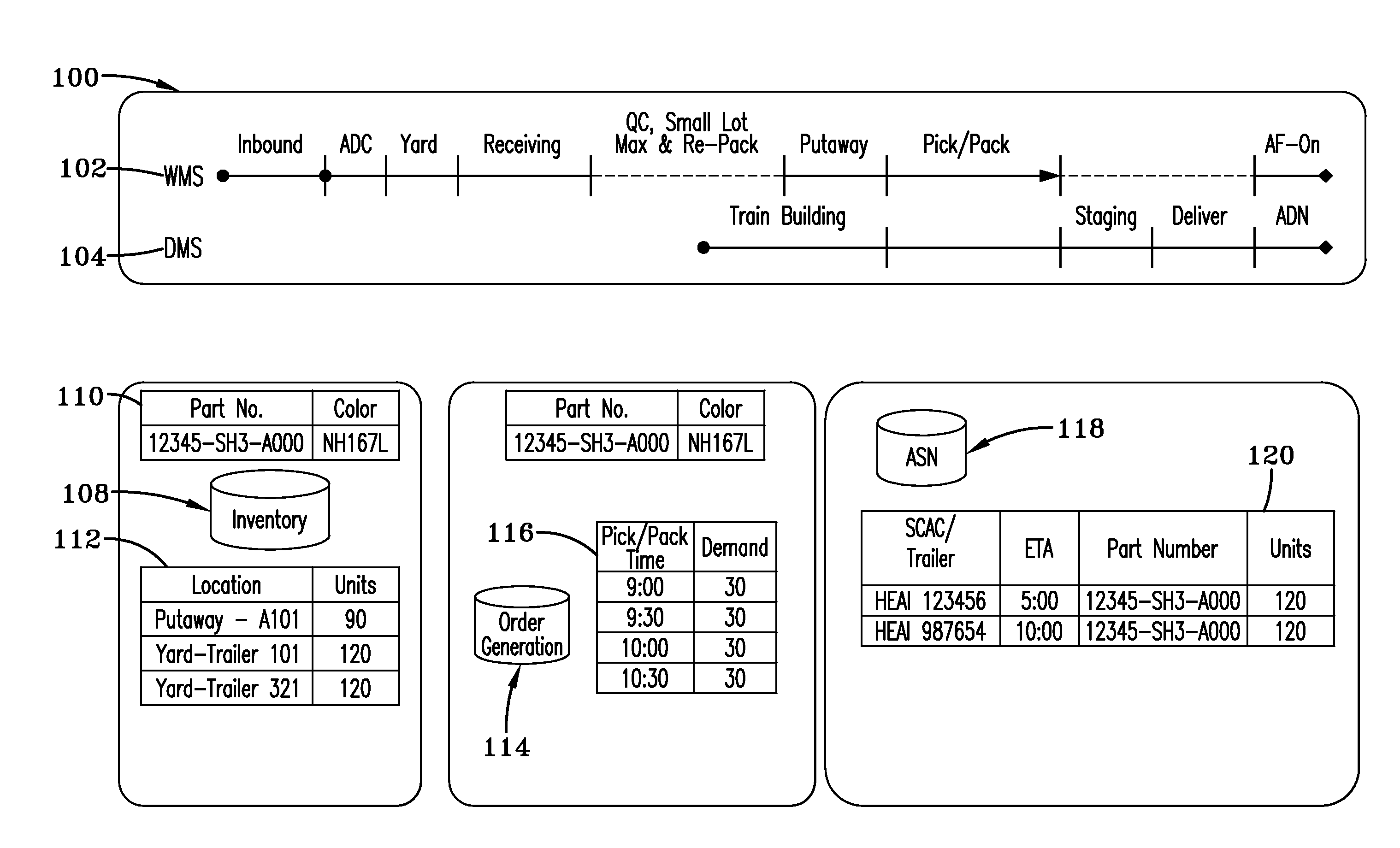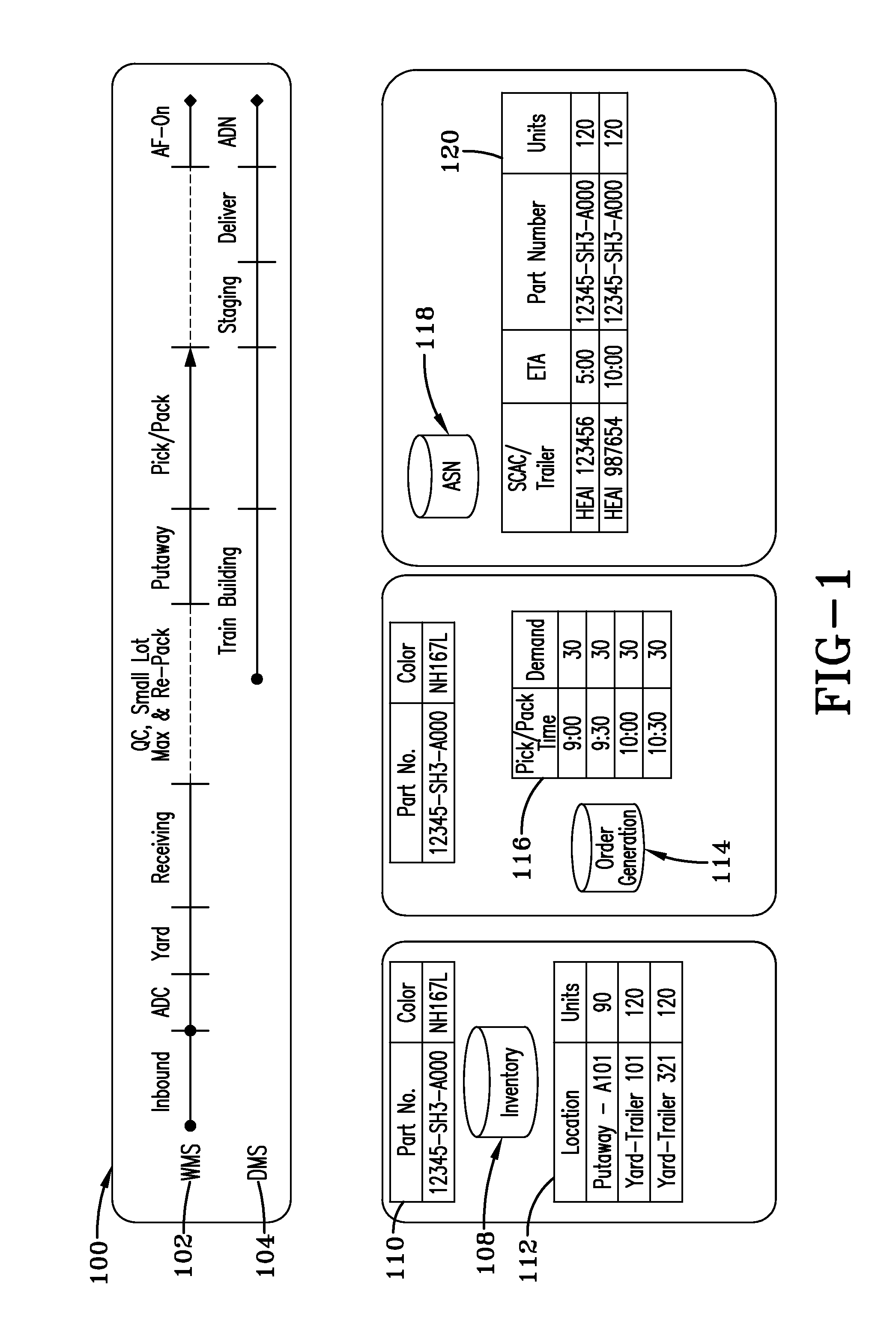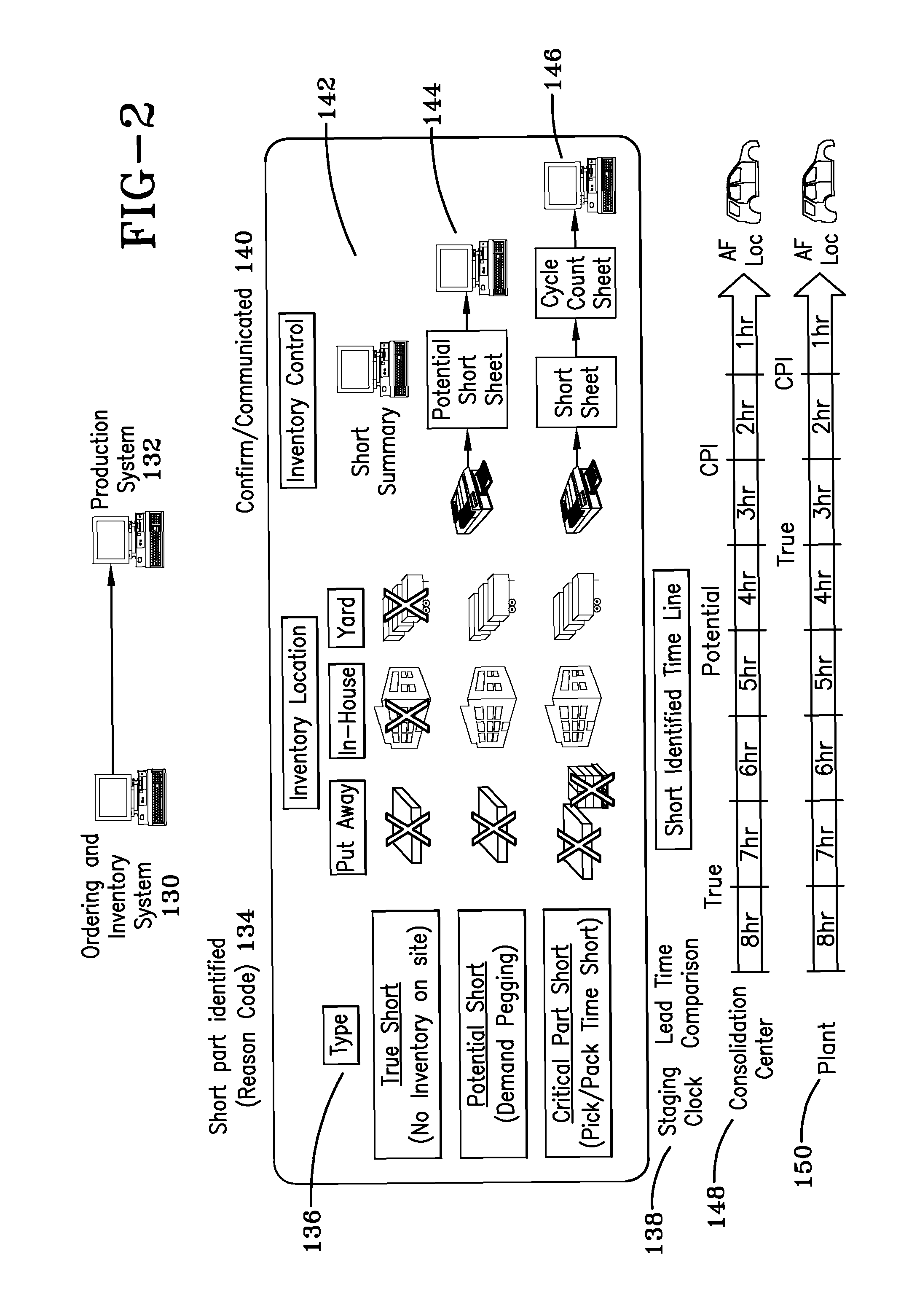Computerized system and method for managing parts shortages
a computerized system and technology for managing parts shortages, applied in the field of parts delivery management, can solve problems such as parts shortages, parts deliveries to the consolidation center may be delayed, production slows or worse, and suppliers may not have provided all parts that were ordered, so as to facilitate parts delivery and reduce the impact of production
- Summary
- Abstract
- Description
- Claims
- Application Information
AI Technical Summary
Benefits of technology
Problems solved by technology
Method used
Image
Examples
Embodiment Construction
[0016]Referring to FIG. 1, a block diagram of a consolidation center inventory and delivery process for an example embodiment is shown. One or more computer systems 100 may support the inventory and delivery process. A warehouse management system 102 tracks data related to movement of parts throughout the consolidation center as follows:
[0017]
TABLE 1Warehouse Management System DataProcessDescriptionInboundParts arrive (in containers) on inbound trailers. WMS 102 has data for each inbound trailer and the parts loaded in the trailer.ADCTrailers are processed through an arrival and departure center.YardTrailers with parts are temporarily stored in the yard. Each trailer is assigned a location in the yard and each trailer's location in the yard is recorded in WMS 102.QC, Small Lot,Special handling for parts. Certain parts may be inspected Demand Re-or re-packed.pack, and Re-packPutawayContainers of parts are stored in delivery inventory areas at the consolidation center to facilitate a ...
PUM
 Login to View More
Login to View More Abstract
Description
Claims
Application Information
 Login to View More
Login to View More - R&D
- Intellectual Property
- Life Sciences
- Materials
- Tech Scout
- Unparalleled Data Quality
- Higher Quality Content
- 60% Fewer Hallucinations
Browse by: Latest US Patents, China's latest patents, Technical Efficacy Thesaurus, Application Domain, Technology Topic, Popular Technical Reports.
© 2025 PatSnap. All rights reserved.Legal|Privacy policy|Modern Slavery Act Transparency Statement|Sitemap|About US| Contact US: help@patsnap.com



